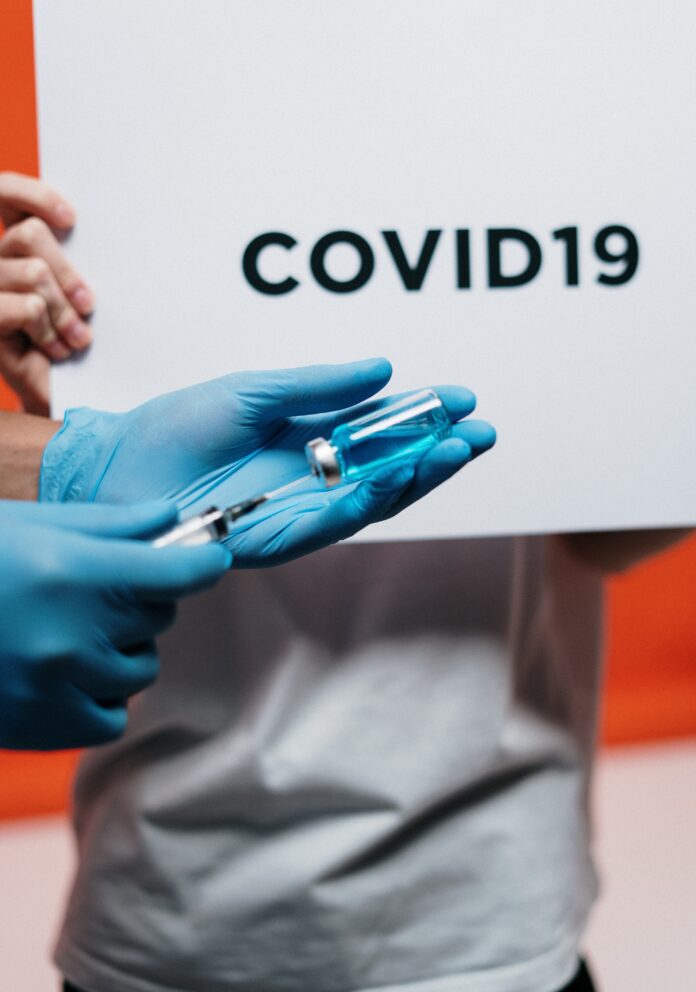
Steven Vargas | California Black Media
COVID-19 hospitalizations are starting to decrease in California, but that decline does not mean the pandemic is over, state health officials warn.
The number of cases in California dropped by 31% over 14 days leading up to Jan. 22, according to the New York Times California Coronavirus Map and Case Count. The most recent peak in California was Jan. 12 with almost 46,000 cases reported that day. On Jan. 22, California reported about 25,000 new cases, almost half the number of cases reported Jan. 12.
Health professionals representing “Vaccinate All 58,” a statewide vaccine safety and equity campaign Gov. Gavin Newsom launched, joined a Zoom press briefing with California Black Media organized in partnership with the Center at Sierra Health Foundation. The event was held to discuss the next steps for distribution of the vaccine. The news conference also addressed changes that must be made — and misconceptions that must be disproved — to encourage a large cross section of reluctant African Americans to feel comfortable enough to take the vaccine.
“We have stepped up our support to hospitals, and we are saving lives,” California Surgeon General Dr. Nadine Burke Harris said at the briefing. “And we are optimistic that this curve is flattening and that the pace of vaccination is accelerating. We will get through this together.”
Part of getting through the pandemic together is for everyone to get vaccinated, Burke Harris explained.
“Our big goal is to turn vaccines into vaccinations,” she said. “So as our state continues to ramp up the rollout of our vaccines, we are continually committed to a fair and equitable allocation and distribution process. Equity has been central to California’s vaccine strategy.”
Equitable distribution has proven to be difficult. In a study The Undefeated and the Kaiser Family Foundation (KFF) conducted last year, half of Black U.S. adults surveyed said they are not planning to take the vaccine. Several other independent surveys have echoed that report’s findings. This prompted the California Department of Public Health (CDPH) to turn to community partnerships to build trust of the vaccine in California’s African American communities.
“We are partnering with 160 or so community-based organizations,” CDPH spokesperson Darrel Ng said. “We’re not quite ready to announce them yet, but they will be all over the state.”
Speakers participating in the briefing said outreach will be conducted through local organizations, including nonprofits and churches. Shantay R. Davies-Balch, President and CEO of the BLACK Wellness and Prosperity Center, described one recent effort. She said a survey was held in the Fresno community to obtain data on how to move forward with programming that will be effective in raising awareness about the COVID-19 vaccine.
Burke Harris said the state is laser-focusing its efforts to reach communities that are disproportionately impacted by COVID-19, particularly Blacks and Latinos.
In Los Angeles, Mayor Eric Garcetti, County Supervisor Holly Mitchell and two city councilmen representing South Los Angeles held a conference at St. John’s Well Child & Family Center to encourage those distrustful of the vaccine to get vaccinated, especially since coronavirus infections disproportionately affect the South L.A. community, made up predominantly of Black and Latino residents.
Currently, in the state of California, vaccines have been distributed to healthcare providers and are now available to adults 65 and older. Soon, the state will launch a website where people can register with a new system that will notify them when they are eligible to receive the vaccine.
Regarding the vaccine’s safety, Dr. Elaine Batchlor, CEO of Martin Luther King Jr Community Hospital in Los Angeles County, explained that both the Pfizer-BioNTech and Moderna vaccines went through various trials and have been authorized by the Food and Drug Administration. She also explained that the vaccine trials incorporated a diverse pool of people, including communities of color and older adults. She noted that an African American woman, Dr. Kissmekia Corbett, was one of the leading researchers on the Moderna vaccine.
“I know that that many people in our community are hesitant and worried about safety, so I want to stress that these vaccines have been held to the same safety standards as all vaccines,” she said.
The vaccines both require two doses. The doses of the Moderna vaccine must be given 28 days apart and the Pfizer vaccine must be given 21 days apart. When the vaccine is available to the broader public, people will be able to receive the vaccine from their primary care provider. If someone does not have a primary care provider, the County Department of Public Health will direct them to the nearest testing center that administers the vaccine.
Davies-Balch noted that “Vaccinate all 58” is working to ensure that the vaccination clinics are accessible to everyone. But the date on which the vaccine will be available to everyone is still not known.
In the meantime, Burke Harris urged people to continue to follow the “four w’s”: wear a mask, wash hands, watch your distance and wait to see your friends and loved ones.
Even those who get vaccinated must follow physical distancing protocols because of the uncertainty around transmission, the experts say. Although the vaccine prevents those infected from getting ill, there are still studies being conducted to see if it prevents transmission. This means that someone who has been vaccinated could possibly carry the virus to someone who hasn’t been, exposing them to COVID-19. Although Batchlor believes the vaccination prevents transmission, she explained that data still needs to be supplied to support that theory.
For now, the goal is to swiftly administer as many vaccinations as possible, she said.
“Once we reach community immunity, we will be ready to throw all of our masks in the trash and go back to our normal activities and interactions,” Batchlor added.


